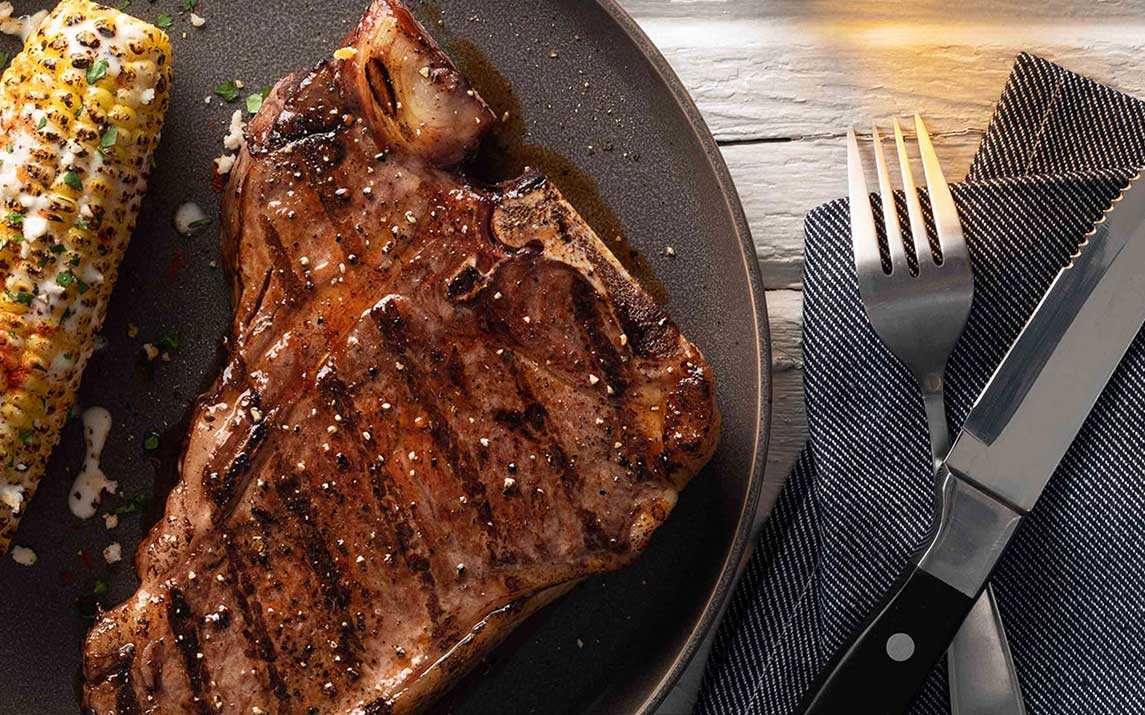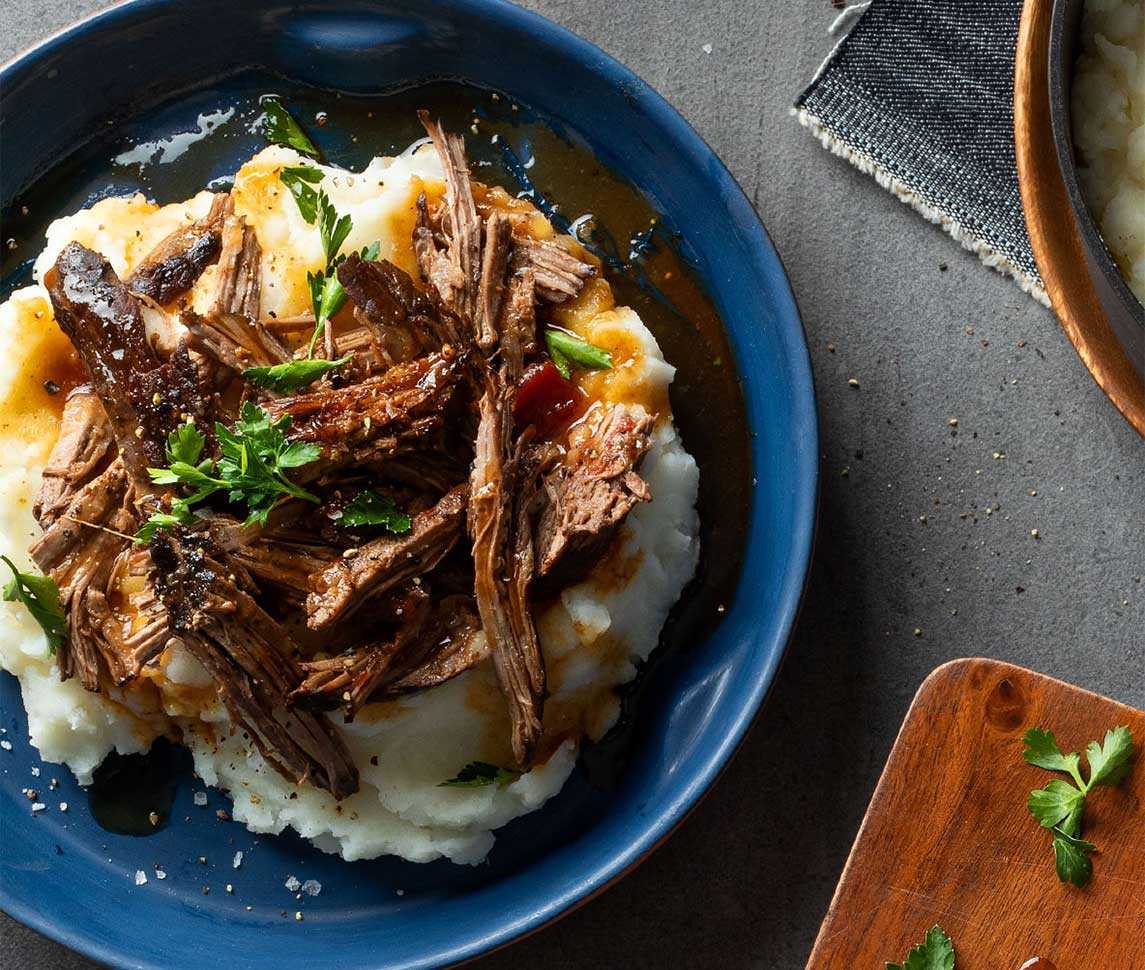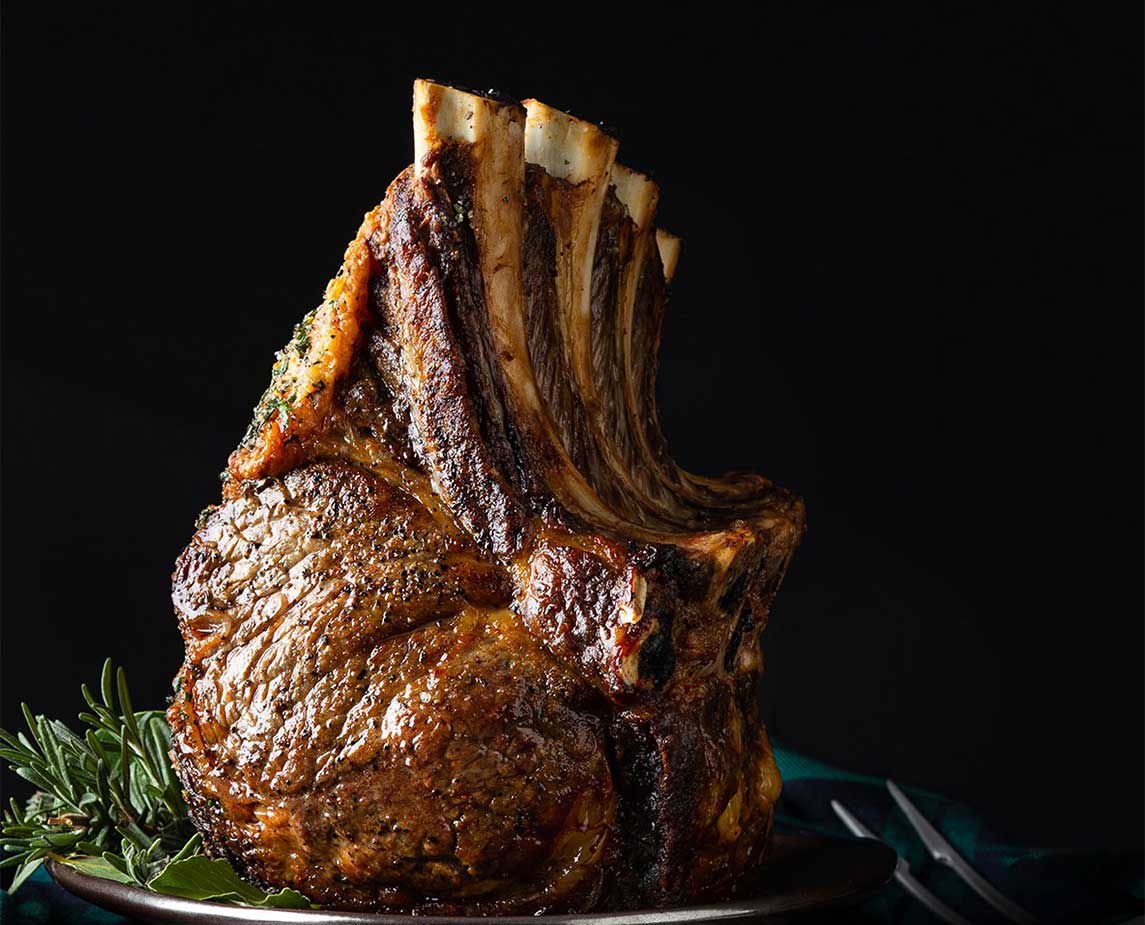Roasting/Slow Roasting
Roasted meat is cooked through contact with dry, heated air in a closed environment (oven). As the outer part of the meat becomes hot, the food’s natural juices turn to steam and penetrate the meat more deeply. Generally, you will use large cuts of tender meat (Rib, Loin, Top Round, Sirloin) for roasting and large cuts of tougher meat (Brisket, Chuck, Bottom Round) for slow roasting. The main difference between roasting and slow roasting is time and temperature. Roasting happens between 275°F and 350°F and slow roasting happens between 225°F and 275°F. Most roasts (1 ½ pounds up to 5 pounds) will take 1 to 3+ hours when roasted. Roasts of a similar weight will take 3 to 7+ hours to get tender when slow roasted.
To roast:
- Trim, tie, season, stuff or marinate the meat. Sear the meat on all sides over direct heat or in a very hot oven to achieve a golden brown color.
- Place the roast onto a rack on a roasting pan to keep the meat elevated, so the hot air can reach all sides.
- Roast the meat uncovered at 275°F-350°F, until it reaches your desired internal temperature. (Be sure to account for carryover cooking, which can be up to 15° on a large roast.)
- Remove the roast from the oven and let it rest covered with foil for 10 to 15 minutes in a warm place before carving. Skipping this step will result in a dry roast.
- You may use the pan drippings to make a sauce/gravy.
- Slice the meat across the grain and serve with the sauce/gravy.
To slow roast:
Follow the same directions above, but cook at a lower temperature (225°F-275°F). Put a small amount of liquid in a pan so the meat doesn’t dry out. Cook tougher cuts until they are tender (typically once the meat reaches an internal temperature of approximately 190°F). You should be able to easily insert a fork into the roast and pull the meat away.



